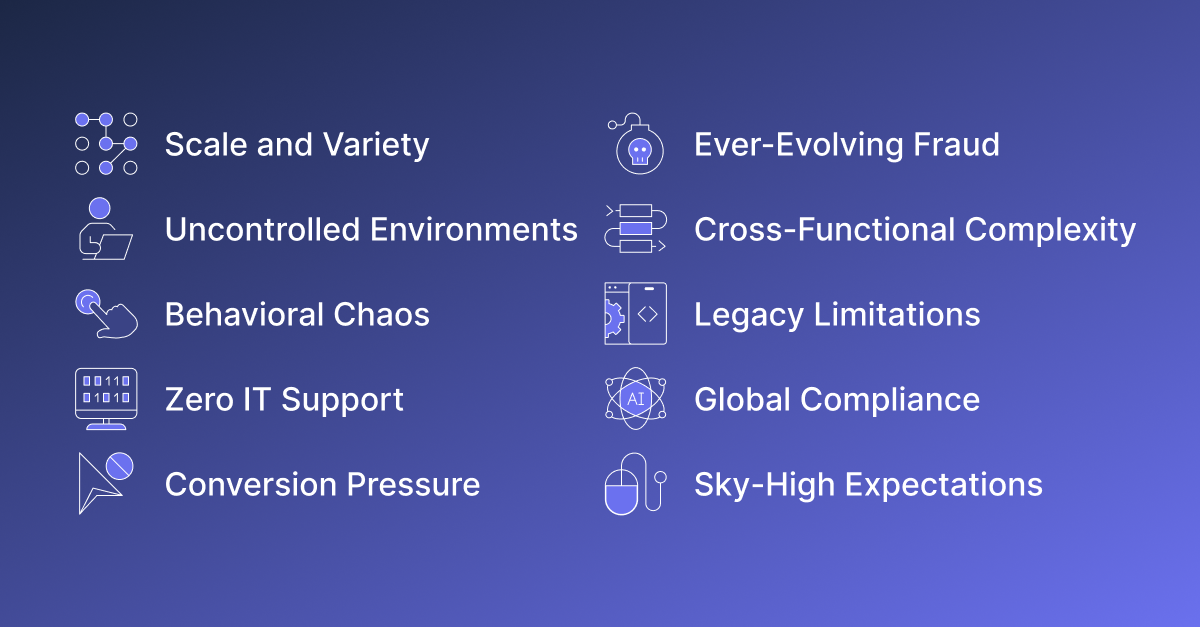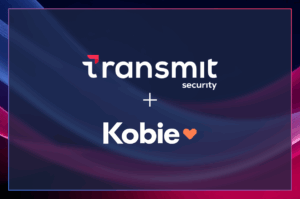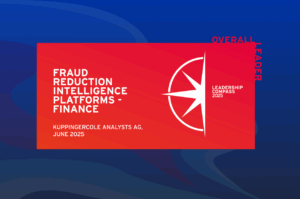Cybersecurity is evolving fast, and Generative AI (GenAI) is leading the charge. From stopping threats before they strike to making policy smarter, AI is already transforming how organizations protect internal environments. But when it comes to securing customers, traditional enterprise security approaches often aren’t even applicable — let alone enough to handle the scale, complexity and unpredictability of consumer interactions.
While enterprise security is critical, it’s also relatively controlled: you’re securing known managed identities and devices, predictable access patterns and a well-staffed IT team. Now contrast that with customer identity security, with millions of unpredictable users, untrusted devices, high fraud risk and zero internal support. That’s not just harder. It’s a jungle.
So how do you simplify something this complex? GenAI might just be the answer.
What Makes Customer Identity So Complex?
Customer identity isn’t just enterprise identity at scale — it’s an entirely different challenge. Unlike internal systems, there’s no standardized stack or predictable setup. Every app is unique, and your customers log in from anywhere, at any time, on any device. They don’t have an IT help desk when something goes wrong. Their behavior is inconsistent, constantly shifting and often hard to predict.
At the same time, they expect seamless access but demand rock-solid security. Any friction feels like a failure. And while you’re trying to meet these expectations, attackers are evolving faster than ever, using automation, AI and social engineering to exploit even the smallest gaps.It’s not just about streamlining logins, but earning and maintaining trust. When you fail to protect a customer’s identity or make the experience too frustrating, you don’t just lose a login, you lose this customer.
Top 10 Challenges in Customer Identity Security

- Scale and Variety: You’re dealing with millions of users, not a known directory of employees.
- Uncontrolled Environments: Customers show up on any device, over any network, from anywhere in the world.
- Behavioral Chaos: There’s no consistency. Users come and go, switch devices and behave unpredictably.
- Zero IT Support: There’s no help desk to fall back on. If something doesn’t work, users abandon the experience.
- Conversion Pressure: Security can’t slow things down. Every second of friction risks revenue and trust.
- Ever-Evolving Fraud: Customer-facing systems are prime targets for bots, account takeovers and synthetic identities.
- Cross-Functional Complexity: Identity, fraud, UX and security teams all play a role, but rarely speak the same language.
- Legacy Limitations: Most identity systems weren’t designed to support this level of speed, scale and adaptability.
- Global Compliance: Privacy and AI regulations are multiplying, adding new pressure to get it right.
- Sky-High Expectations: Customers demand instant, personalized, invisible security. They don’t give second chances. Fail once, and the fallout can be reputational, financial, even personal. Unlike enterprise security, the risks here hit both the business and the individual.
How GenAI Transforms the Game
This is where GenAI enters the picture. It is not just a tool but a force multiplier and a strategic pillar of customer identity and fraud prevention programs.
Instead of manually rewriting policies, hardcoding flows or reacting to fraud after it hits, GenAI enables identity systems to become dynamic, intelligent and personalized in real time. Here are just a few ways it’s improving customer identity security:
- Reduced total cost of ownership: GenAI can be used to link and manage data across multiple identity and fraud systems and eliminate manual processes.
- Accelerate operations and time to value: Use GenAI to generate and optimize identity journeys, perform real-time security reviews and adapt policies on the fly.
- Seamless, best in class experiences: Reduce friction across the customer journey by following UX best practices, generating context-aware flows and using AI-powered analytics to continuously improve every interaction.
- Policy optimization and adaptation: AI can evaluate and update authentication flows based on real-time behavior and evolving risk patterns.
- Automated user migration and orchestration: GenAI restructures identity attributes, detects errors and generates migration workflows without engineering overhead.
- Fraud detection and prevention: AI models identify anomalies, detect early signs of account takeover and automate response playbooks to mitigate threats instantly.
- Low-code/no-code journey building: Even complex identity use cases can be deployed fast, without needing a squad of developers.
- AI-generated flows and connectors: Integration with existing identity platforms and services becomes seamless and faster than ever.
- Regulation-aware journey building: Create user journeys that meet regulatory requirements for both authoritative oversight and customer privacy, while still delivering a world-class user experience.
These GenAI-driven capabilities represent a fundamental shift in how customer identity challenges can be addressed — faster, smarter and with far less friction. In a landscape that’s constantly changing, embracing this new approach is becoming less of an advantage and more of a necessity.
From Friction to Trust, at Scale
Customer identity security goes far beyond IT. It’s a core business challenge, and it’s getting harder by the day. Legacy systems weren’t built to handle the scale, unpredictability or sophistication of today’s identity landscape. But GenAI is.
With the right AI-powered tools, businesses can move from reactive to proactive, from friction-heavy to seamless, from brittle to adaptive. Mosaic is bringing that vision to life one use case, one flow and one secure identity at a time.This isn’t just a shift in tools. It’s a transformation in mindset.
The future belongs to the organizations that secure users on their terms — with intelligence, empathy and trust built in.



